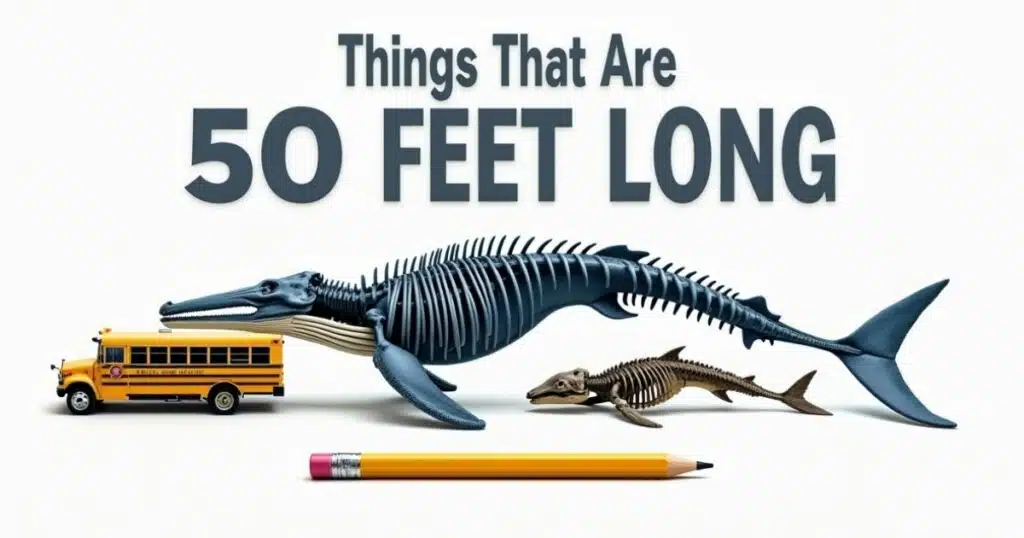Understanding distance can sometimes be challenging, and one of the most common measurements people struggle to imagine is 50 feet. When we talk about 50 feet visualized, we are describing how this length, height, or distance would appear in real-world terms. This helps people better understand space for construction, design, boating, or even everyday tasks like gardening.
In practical life, 50 feet is not an abstract figure. It’s a distance you can find in buildings, vehicles, and even natural structures. By learning how 50 feet visualized looks and feels, we gain a more intuitive sense of measurement. This knowledge allows us to estimate accurately, whether we are picturing the height of a building or the length of a yacht.
Understanding the Scale of 50 Feet
When you think about 50 feet visualized, it helps to imagine common objects that represent this length. For instance, two medium-sized cars parked bumper to bumper roughly equal 50 feet. A typical basketball court is just under twice this distance, and an average city bus is about 40 to 45 feet long—slightly shorter than the distance we are visualising.
Fifty feet is also the approximate height of a four to five-storey building. This means that if you stand on the ground and look up at a small block of flats, you’re seeing something close to 50 feet tall. When 50 feet visualized this way, it becomes clear how big this measurement truly is in both horizontal and vertical dimensions.
Converting 50 Feet into Common Measurement Units
To make 50 feet visualized in universally understandable terms, conversions are essential. In the metric system, 50 feet equals about 15.24 metres. If you prefer centimetres, that’s roughly 1,524 cm. This makes it easier for people in the UK and Europe, who often use metric measurements, to grasp the same distance.
Knowing 50 feet in metres or centimetres also helps with projects requiring precision, such as architecture or landscaping. When you picture 50 feet visualized as 15 metres, you can easily compare it to a small garden, a swimming pool, or the width of a property. This conversion bridges the gap between numbers and visual reality.
How Long, Tall, and Far Is 50 Feet?

If we want to see 50 feet visualized in length, consider two average-sized family cars placed end-to-end or the distance across a large living room multiplied several times. For athletes, half the length of a basketball court also equals around 50 feet. These relatable comparisons make it easier to imagine how long that distance really is.
For height, 50 feet visualized can be seen in the form of a tall oak or redwood tree or the height of a mid-sized commercial building. It is also comparable to the vertical distance from the ground to the roof of a small block of flats. When viewed horizontally, 50 feet is about 17–18 large steps for an adult.
Real-World Examples Around 50 Feet
You can find 50 feet visualized all around you once you start noticing. In nature, a young adult blue whale can reach 50 feet in length, and certain trees such as poplars or palm species can also grow to that height. This shows how significant and substantial 50 feet truly is.
In man-made structures, 50 feet visualized could represent the length of a small pedestrian bridge or the front yard of a large suburban home. A 50-foot expandable garden hose, when stretched, gives a perfect real-life view of this length. Even the playing area of a badminton court is just under 50 feet long, another familiar way to picture it.
The World of Yachts and Boats Under 50 Feet
The boating industry often uses this measurement when describing compact but capable vessels. 50 feet visualized in boating terms marks an ideal size for many cruising yachts and motorboats. These boats are large enough to offer comfort and space, yet small enough to handle without a full crew.
Some of the best cruising yachts under 50 feet include models like the Beneteau Oceanis 46.1 or the Hallberg-Rassy 44. Bluewater sailboats under 50 feet are popular with long-distance sailors for their balance between performance and durability. Likewise, motor yachts under 50 feet provide a luxurious experience without excessive size, making this measurement very practical.
Practical Ways to Visualise 50 Feet Without Measuring
If you don’t have a tape measure handy, there are several clever ways to get 50 feet visualized quickly. One easy method is the stride approach. The average person’s step is about three feet, so walking 17 or 18 steps in a straight line roughly equals 50 feet. This is a simple and surprisingly accurate estimation technique.
Another method involves using everyday items. Two parked cars usually measure close to 50 feet in combined length. A typical garden hose or driveway can also provide an excellent comparison. Once you’ve seen 50 feet visualized in these everyday contexts, it becomes much easier to estimate distances confidently for DIY, landscaping, or design projects.
How 50 Feet Appears in Architecture and Landscaping
Architects often rely on 50 feet visualized when planning mid-sized structures such as houses, small warehouses, or extensions. The distance is perfect for creating proportionate layouts without overcrowding a property. For instance, a 50-foot boundary wall or fence provides ample privacy while maintaining openness.
In landscaping, 50 feet visualized can define the length of a rectangular garden or driveway. It’s long enough for a walking path, small patio, or line of trees. Understanding this length allows homeowners to make informed decisions about space utilisation, ensuring that outdoor areas remain functional and visually appealing.
Why Understanding 50 Feet Matters in Everyday Life
Getting 50 feet visualized correctly is more useful than most people realise. It’s a measurement that appears in home design, travel, boating, and nature. Knowing how to visualise it saves time and improves spatial awareness, especially when accuracy is required but tools aren’t available.
When 50 feet visualized, it gives context to everything from building height to garden size. Whether you are planning a fence, estimating parking space, or choosing the best yacht under 50 feet, understanding this distance provides confidence and perspective in decision-making.
Conclusion: Seeing 50 Feet with Clarity
When 50 feet visualized, it becomes much easier to relate to everyday structures, objects, and distances. This measurement defines much of our built environment and even aspects of the natural world. It appears in architecture, sport, transport, and maritime design—all parts of life where understanding space is crucial.
Being able to see 50 feet visualized helps transform abstract numbers into something tangible. Whether you think in metres or feet, this guide shows that 50 feet is a practical, meaningful distance we encounter constantly. From tall trees to sailing yachts, 50 feet truly measures more than we realise.
Frequently Asked Questions
How long is 50 feet in metres?
Fifty feet equals approximately 15.24 metres, making it easy to convert for metric users.
How tall is a 50-foot building?
A building of 50 feet is usually around four to five storeys tall, depending on ceiling height.
How far is 50 feet to walk?
It’s about 17–18 steps for an average adult, depending on stride length.
What can I compare 50 feet to?
You can compare it to two cars end-to-end, a bowling lane, or a small boat’s length.
Why are yachts under 50 feet so popular?
They strike the perfect balance between comfort, performance, and manageability for sailing or cruising.
You may also read: Health Journey and Personal Resilience


